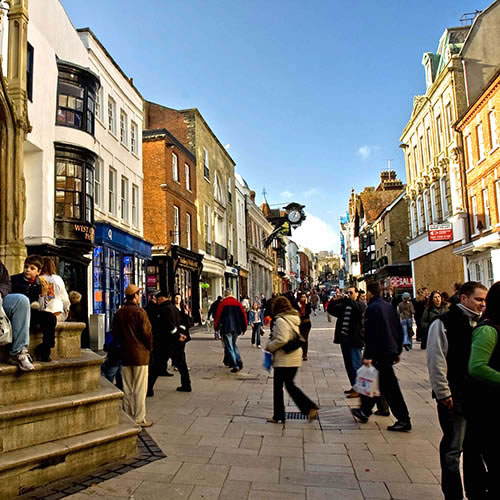The fall in footfall showed no signs of subsiding with a one per cent drop in February, compared with a year ago.
According to the BRC-Springboard Footfall and Vacancies Monitor this fall was lower than the three-month average of 0.8 per cent but slightly higher than the 12-month average of a 1.1 per cent drop.
High-street footfall bucked the trend by rising slightly (0.1 per cent), compared with February 2016, which saw a 2.9 per cent decrease.
However, the slight increase was outstripped by falls in both retail parks and shopping centres, down 1.6 per cent and 2.6 per cent respectively.
These figures compared with a 2.5 per cent increase in footfall in retail parks and a 0.6 per cent drop in shopping centres in February 2016.
British Retail Consortium chief executive Helen Dickinson said: “Visits to retail destinations fell by one per cent in February, which marks little change to what has been a familiar story over the past few years. Although, given the disappointing in-store sales so far in 2017, the decline in footfall last month is unsurprising.
“On closer inspection, there has been a steeper drop than normal in retail parks, with footfall to this shopping destination falling at the fastest rate since November 2013. In comparison, footfall on the high street grew marginally, likely driven by its diverse offer.
“The modest relief fund for business rates announced in the Budget will hopefully go some way to helping those shops hardest hit, albeit only temporarily. It won’t however ease the burden for the majority of retailers who will continue to pay nearly a half of rental values in property tax. A business tax system that continues to curtail investment in bricks and mortar is at odds with an industry that desperately wants to invest in order to maintain local jobs and build more experience and engagement with shoppers to attract them into their stores.”
Diane Wehrle, marketing and insights director of Springboard, added: “Footfall in February was a tale of two halves. While footfall improved slightly with a drop of one per cent compared to -1.3 per cent in January however, this decline did not reflect the stabilisation of consumer behaviour.
“Increasing uncertainty arising from the imminent triggering of Article 50 has certainly started to have an impact on purchasing behaviour, the types of destinations shoppers are visiting and how they spend their money. High streets are clearly benefiting as the destination of choice for dining and leisure, while shopping centres continue to underperform as they struggle with a weak entertainment and leisure offer, coupled with increasing caution amongst consumers around retail spend.
“Retail parks experienced their biggest drop in footfall (1.6 per cent) since November 2013 as spend on furniture and household items – traditionally a significant footfall driver for retail parks – weakened slightly in February. High streets now have the opportunity to further promote their offer and pull in visitors to shop and dine.”


